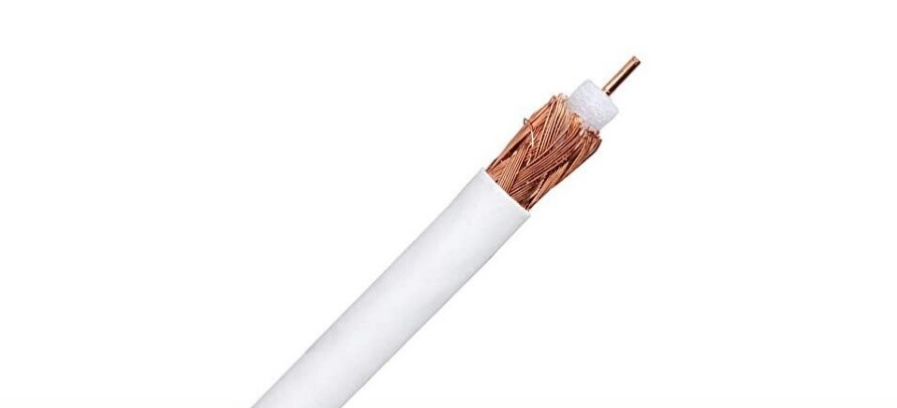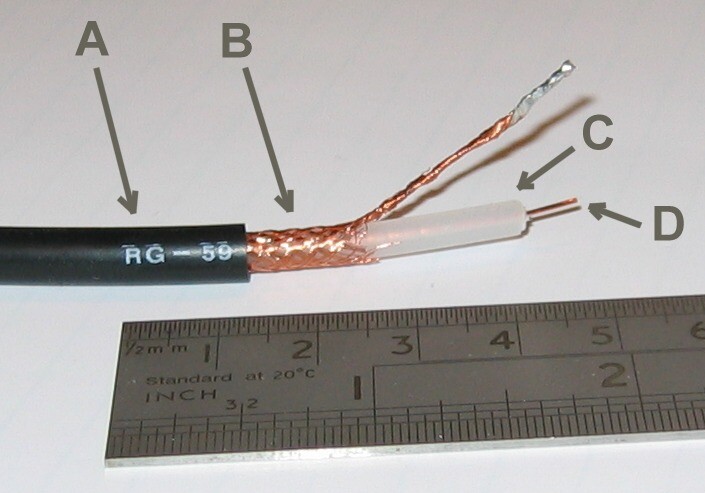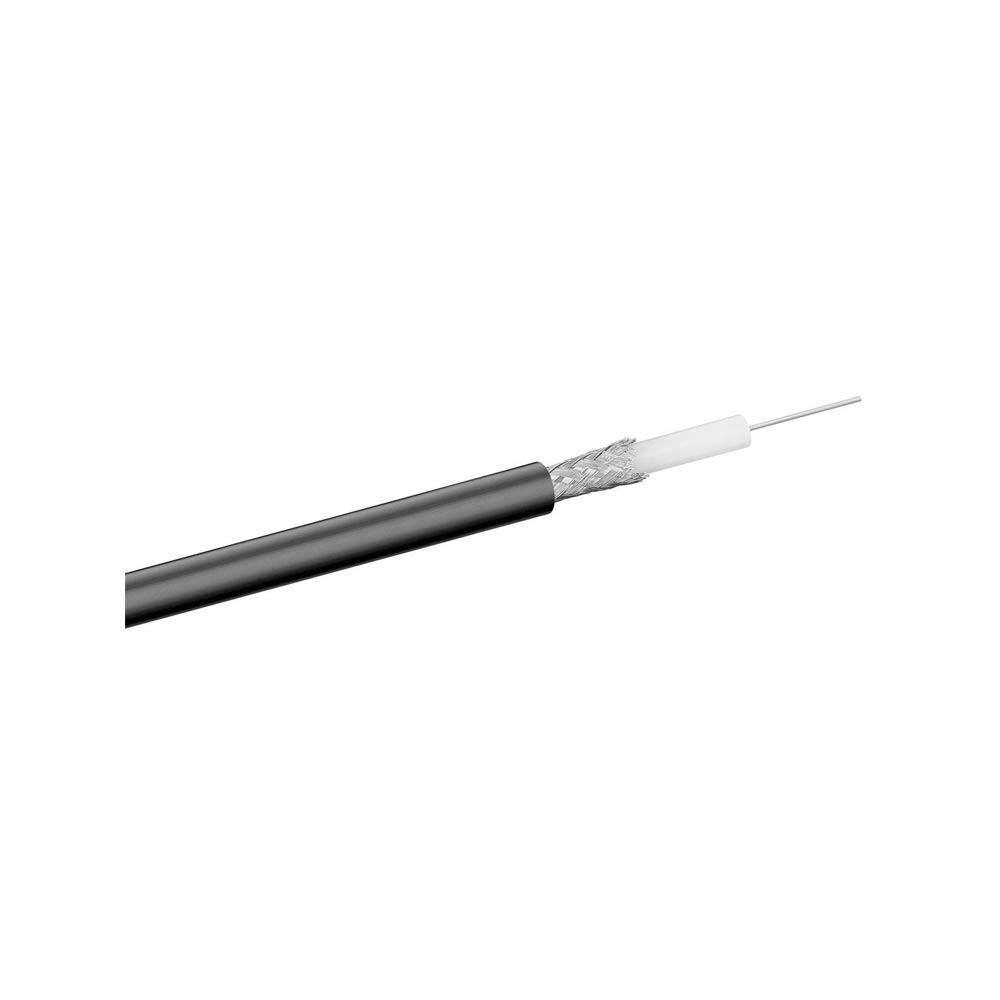
We are going to explain to you what coaxial cables are and what they are for, a rather particular type of cable that is still used to connect televisions to the antenna. There are also several uses, so we will tell you about them in addition to explaining the types that you can find and telling you which one to buy if you need one for TV.
We are going to start by trying to explain to you in the simplest way possible what exactly a coaxial cable is and what are the characteristics by which you can distinguish it. Then we will go on to tell you what it is usually used for today, and we will end by telling you the differences between the three most common types.
What is a coaxial cable?
It has been carrying signals from one device to another for decades, and the coaxial cable was created in the 1930s for the transport of radio frequency signals, which are those that go from an antenna to the receivers. Cables that have two conductors on the same axis are called coaxial.

These two conductors are, on the one hand, an outer cylinder that is a braided metal mesh (B) that serves as a return conductor and internal shielding, stabilizing its electrical parameters. In the center of the cable, there is a copper core (D) which is the second conductor, the most important, and which is the one that carries the information. Between the two there is a thick insulating layer (C) that separates them, and on the outside another insulating layer (A) like that of other cables.
Therefore, ordering the ideas a bit, we have a nucleus in which the electronic signals are transported with the information that we want to carry to a device. This core is surrounded by its dielectric insulating layer, and above it is a layer of braided wire that absorbs electronic signals to prevent data loss from the central cable, all being covered by the outer insulating layer.
All in all, what we have is a perfectly protected core so that the information it carries is not interfered with. We also see that it is a very thin core compared to the total thickness of the cable, which gives us an idea of how well-protected it is.
All this protection makes coaxial cables allow a clean signal to be sent without interference or electrical noise. For this reason, they are widely used in video, professional audio, and radio systems, since these image and sound signals arrive clearly. In the same way, in most professional hardware such as audio cards, it is sometimes possible to find sockets for this type of cable.
What is a coaxial cable used for?
The coaxial cable is usually used above all on television, and it is generally the one we use to connect the TV to the antenna socket in our house. It is also used in urban cable television networks, and closed-circuit television is used in video surveillance systems.
Before the use of fiber optics was imposed in our homes, coaxial cable was also used in hybrid coaxial fiber systems. These are fiber optic networks that use both the optical fiber itself and the coaxial cable in some sections. In this way, coaxial can be reused to set up broadband networks, although little by little its use has been replaced by networks in which everything is fiber optic.
Also before fiber optics, coaxial was widely used in analog phone systems that were based on frequency division multiplexing, as well as older versions of Ethernet for data transmission.
Returning to current uses, coaxial is still a good resource in the world of radio amateurs, being used to connect the transmitter with the antenna. Also, professional sound cards, which as we said before can have coaxial jacks and video capture machines. Likewise, its variants are used in intercity telephone networks and submarine cables.
Types of coaxial cable and what to use them for
There are a large number of types of coaxial cable, almost a dozen of them depending on their physical characteristics. But explaining them all to you does not make much sense, since only three of them are widely used today. So, let’s focus on those guys. We will tell you the name of the cable model and its use so that you know what you can use each of them for.
To begin with, we have the most common of all, which is the RG-6. It is used in high-definition television, allowing runs over distances of several tens of meters without loss of signal. This is the one you will find in most stores, and the most common for your TV.

Then we have RG-59 cable, the predecessor of RG-6 and not used as much anymore, but cheaper, malleable, and thinner. It can only send the signal a few meters before degrading it and it doesn’t send HD video, but it can still be used in video surveillance systems. **It was used in video cassette systems and cable TV receivers a few years ago, before the advent of high-definition television.
And finally, there is the RG-11, which together with the RG-6 is one of the successors of the RG-59. It is much more expensive than the RG-6 because it has less signal loss and allows much longer distance runs, so it is only used in special cases. It is also less flexible and thicker, which is why it is used above all in installations with a large extension, such as links between receivers and HDTV antennas in the air.
In short, the idea with which you should stay is that for domestic use the coaxial cable to use is RG-6 and that in external installations with long runs, the RG-11 is chosen. The RG-59 can still be found in stores or bazaars, but currently, it is of little use in the world of television because it does not support high definition.
Coaxial Cable FAQ
1. How to connect the coaxial cable?
Coaxial cable has two ends: male and female. The male connects to the television in the dedicated port, while the female connects to the antenna in the wall socket.
2. How do I know if I have a coaxial cable?
Any TV has a coaxial cable. Normally, the input is usually located on the back of the television, next to the other ports.
3. Where is a coaxial cable used?
Normally, coaxial cable is used in televisions to connect them to the antenna, but they are also used in professional sound cards and some video capture cards.

Sharlene Meriel is an avid gamer with a knack for technology. He has been writing about the latest technologies for the past 5 years. His contribution in technology journalism has been noteworthy. He is also a day trader with interest in the Forex market.











